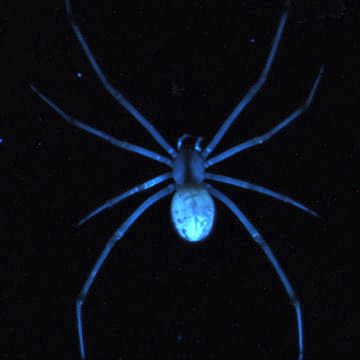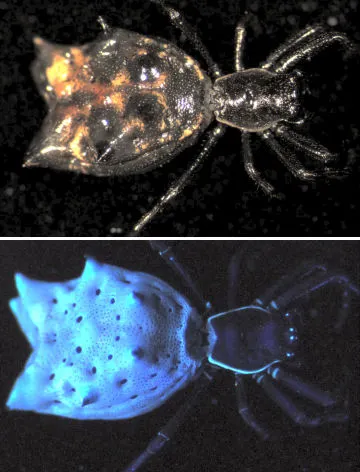Fluorescence under ultraviolet light seems to be a widespread trait among spiders, say researchers who have done the first broad survey of spiders for this property.


The researchers tested blood from representatives of 10 diverse families and found that while under ultraviolet (UV) illumination, all samples glowed blue to human eyes, says Susan Masta of Portland State University in Oregon. In a wider survey of 19 spider families, at least one species from each family displayed glowing hairs or some other external fluorescence.
Masta says that the project began serendipitously when she and her colleagues turned off the lights while calibrating an instrument that illuminated a spider with UV light. The UV made bits of the spider’s body fluoresce—that is, absorb one wavelength and emit another. Some of the emitted wavelengths fell within the range of human vision, and Masta noticed spider hairs glowing in the dark.
Masta and her colleagues found that hemolymph, the spider version of blood, fluoresced even in species that have no external fluorescent body parts. Previous studies by other researchers had found fluorescence in only a few species (SN: 2/10/07, p. 94: Available to subscribers at Glittering male seeks fluorescing female).
The external patterns varied widely. Emitted wavelengths, in UV as well as in visible light, differed among species, suggesting that spiders carry a variety of fluorescing compounds and that some individuals have more than one compound, Masta says.
Many spiders have limited vision, so Masta doubts that the light communicates much among them. Masta says that it’s too early to tell whether the fluorescence makes them more or less conspicuous to predators.
The team reports its findings online and in an upcoming Biology Letters.






